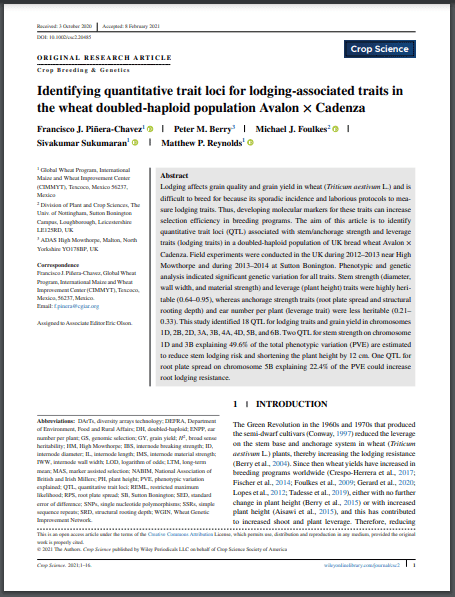Lodging affects grain quality and grain yield in wheat (Triticum aestivum L.) and is difficult to breed for because its sporadic incidence and laborious protocols to measure lodging traits. Thus, developing molecular markers for these traits can increase selection efficiency in breeding programs. The aim of this article is to identify quantitative trait loci (QTL) associated with stem/anchorage strength and leverage traits (lodging traits) in a doubled-haploid population of UK bread wheat Avalon × Cadenza. Field experiments were conducted in the UK during 2012–2013 near High Mowthorpe and during 2013–2014 at Sutton Bonington. Phenotypic and genetic analysis indicated significant genetic variation for all traits. Stem strength (diameter, wall width, and material strength) and leverage (plant height) traits were highly heritable (0.64–0.95), whereas anchorage strength traits (root plate spread and structural rooting depth) and ear number per plant (leverage trait) were less heritable (0.21–0.33). This study identified 18 QTL for lodging traits and grain yield in chromosomes 1D, 2B, 2D, 3A, 3B, 4A, 4D, 5B, and 6B. Two QTL for stem strength on chromosome 1D and 3B explaining 49.6% of the total phenotypic variation (PVE) are estimated to reduce stem lodging risk and shortening the plant height by 12 cm. One QTL for root plate spread on chromosome 5B explaining 22.4% of the PVE could increase root lodging resistance.

